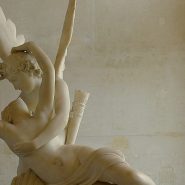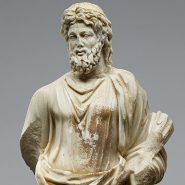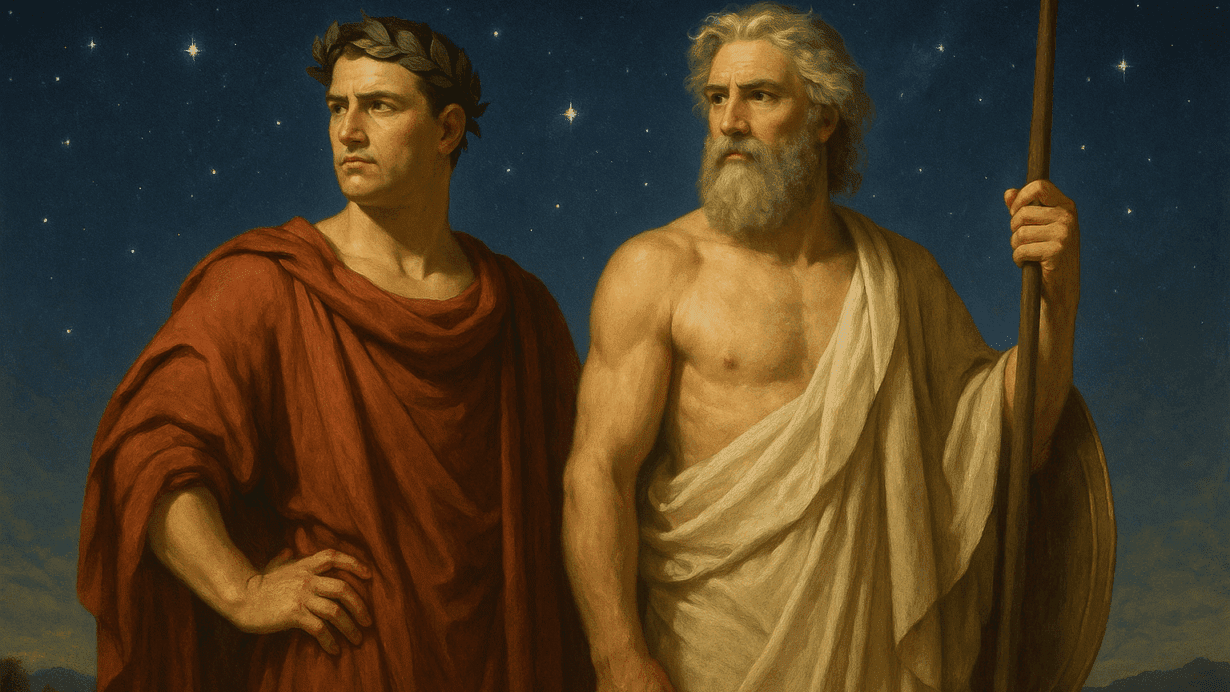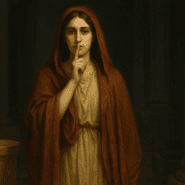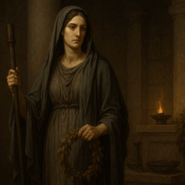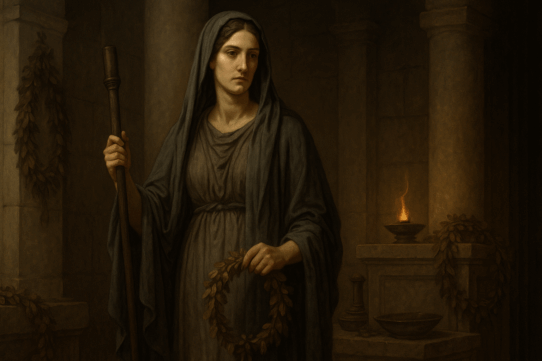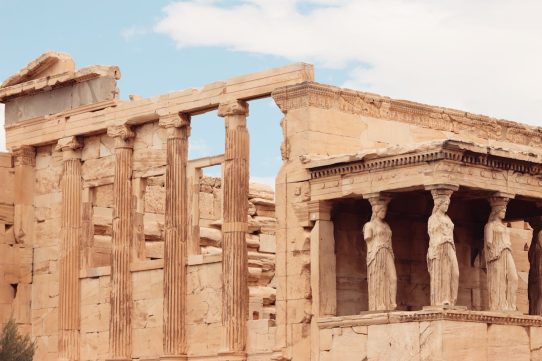QUICK SUMMARY
Roman and Greek syncretism describes how Rome blended, merged, and reinterpreted Greek gods, myths, and religious traditions. Rather than copying Greek religion directly, Romans reshaped it to reflect their own values, identity, and state-centered worldview.
A Meeting of Two Mythic Worlds
When Romans encountered Greek culture, they found a well-developed world of gods, stories, and philosophical ideas that stretched back centuries. Rather than reject these traditions, the Romans absorbed them into their own system through a process known as syncretism.
Syncretism (pronounced sing·kruh·ti·zm) is the blending or reconciliation of different beliefs, deities, and cultural traditions into one cohesive religious framework.
In the Roman context, this meant adopting Greek gods, myths, rituals, and artistic styles, then reshaping them to align with Roman ideals such as duty, order, discipline, and the authority of the state.
This process created a shared mythological language that spanned the Mediterranean while preserving Rome’s unique cultural identity.
Why Syncretism Happened
Several historical, social, and cultural forces drove the blending of Greek and Roman religion.
Contact Through Trade and Colonization
Greek communities had long existed in southern Italy and Sicily. Their temples, art, language, and festivals naturally spread to nearby Roman regions. Early Roman exposure to Greek religion happened close to home.
Expansion of Empire
As Rome conquered Greek-speaking territories, it inherited their religious traditions. Greek cities, sanctuaries, and culture influenced Roman administrators, soldiers, and settlers.
Admiration for Greek Learning
Greek literature, philosophy, and art fascinated Roman elites. Wealthy Romans hired Greek tutors, collected Greek sculptures, and saw Greek mythology as the height of cultural refinement. This admiration made Greek religion an appealing model.
With these influences combined, syncretism became an organic part of Rome’s religious evolution.
Merging the Gods: Key Examples
One of the most recognizable aspects of syncretism is interpretatio graeca, the identification of Roman gods with their Greek counterparts.
Jupiter and Zeus
Jupiter absorbed Zeus’s sky-related imagery, thunderbolt, and rulership. Yet Jupiter remained the protector of Roman law and the state, giving him a more civic and legal role than Zeus.
Mars and Ares
Ares embodied chaotic violence, but Mars represented disciplined military virtue and the protector of Rome’s foundations. Romans transformed a feared deity into a god of strategy, order, and civic pride.
Venus and Aphrodite
Venus inherited Aphrodite’s beauty and love, but Romans strengthened her role in fertility, ancestry, and political destiny. Her association with the Julian family elevated her status to Rome’s divine mother.
Minerva and Athena
Minerva took on Athena’s intelligence and craftsmanship but became more closely tied to Roman industry, professions, and civic responsibility.
Neptune and Poseidon
Although both ruled over waters, Neptune’s Roman identity emphasized freshwater and horses in addition to the sea, blending Italic traditions with Greek influence.
These examples show how Romans adapted Greek deities while preserving their own cultural foundations.
Roman Adaptation: What Truly Changed
Even when the gods looked Greek, the Roman religious system transformed their purpose.
Religion of the State
Greek religion focused heavily on city-states and local cults. Roman religion, however, revolved around the security and destiny of the state. Jupiter Optimus Maximus represented not just the heavens but Rome’s political authority.
Morality Over Mythic Drama
Greek myths explored passion, conflict, and tragedy. Roman adaptations often softened extremes, reframing myths as moral lessons or symbols of Roman destiny.
Structured Ritual
Roman worship emphasized precise ritual and legal formulas. Even Greek myths, once adopted, were practiced through distinctly Roman religious procedures.
Preservation of Italic Roots
Romans merged Greek mythology with older Italic traditions rather than replacing them. Deities like Janus, Vesta, and the Lares remained uniquely Roman.
These adaptations produced a version of Greek mythology that felt familiar yet unmistakably Roman.
Mythology and Literature
Roman writers used Greek stories as raw material, reshaping them for a Roman audience.
Virgil modeled the Aeneid on Greek epic but transformed it into the story of Rome’s divine origins.
Ovid’s Metamorphoses retold Greek myths with Roman humor, elegance, and philosophical layers.
Greek characters and stories became vehicles for Roman ideals—duty, destiny, legacy.
Art and Iconography
Greek artistic forms heavily influenced Roman statues and temples. Many Roman depictions of gods mirrored Greek poses and styles.
Yet Roman art leaned toward realism and age, presenting gods with gravitas rather than idealized perfection. Saturn, for example, appears as a wise elder rather than a youthful titan.
Philosophy and Religious Thought
Greek philosophical schools deeply shaped Roman views on divinity, fate, virtue, and cosmology.
Stoicism, in particular, blended easily with Roman ideals of duty, endurance, and public service. Through philosophy, syncretism extended beyond myth into ethics and daily life.
The Limits of Syncretism
Despite heavy Greek influence, Romans preserved sharply Roman elements:
- Household worship of Lares and Penates
- Veneration of ancestors
- Agricultural and civic festivals
- Ritual precision and priestly offices
- Imperial cult honoring the emperor
Greek mythology enriched Roman religion but did not define it entirely.
Syncretism as a Tool of Empire
Syncretism also helped Rome govern a multicultural empire. By pairing local gods with Roman ones, Rome encouraged unity without forcing people to abandon their traditions.
Examples include:
- Isis merging with Roman goddess attributes
- Celtic gods equated with Mars or Mercury
- Eastern deities integrated into Roman cults
This flexible system allowed Rome to maintain control while respecting local identities.
The Lasting Legacy
Roman vs Greek syncretism shaped Western cultural memory. Because Romans preserved, rewritten, and popularized Greek myths, much of what survives today comes through Roman retellings.
The blending of these traditions created a mythological heritage shared across centuries—formed by Greek imagination and Roman interpretation.
